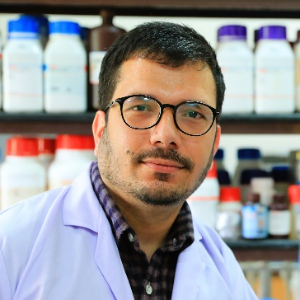Vasudeva Singh, Gauhati University, India
Production of cereals in World is around 2600 million tonnes (MT) and India produces around 280 MT as on 2018-19. 750 MT of paddy rice is produced in World and India produces around 160 MT. From this, ~10% (16 MT) goes for the production of rice products like rice flakes, expande [....] » Read More



















Title : Phytomineral complexes as elements of functional nutrition to enhance the protective function of the lymphatic system
Vladimir Gorchakov, Novosibirsk State University, Russian Federation
The modern medicine estimated a food role in human life, attracting knowledge of lymphology. Accumulation of knowledge of lymphatic system allowed to integrate a lymphology with a nutritiology and pharmacology. It promoted emergence of the new direction a lymphonutritiology. This [....] » Read More
Title : New approaches in exploring the potential of agro biomass for food and nutraceutical applications
Sudesh Kumar Yadav, Center of Innovative and Applied Bioprocessing (CIAB), India
Our main research focus is the development of processes for exploration of biomass and their transformation into valuable compounds. We have developed edible coatings from waste biomass and demonstrated their use in shelf life enhancement of tomatoes. An economical process for ex [....] » Read More
Title : Beans and bean-containing products: knowledge and attitude among university students
Dalia El Khoury, University of Guelph, Canada
The growing popularity of the gluten-free diet and the plant-based diet has significantly influenced consumers, food manufacturers and health care professionals. Health experts have been interested in the nutritional adequacy of those diets, as well as their effectiveness in mana [....] » Read More
Title : Study of potential synergistic effect of probiotic formulas in food toxin reduction
Emily Siu Mei Choi, Technological and Higher Education Institute of Hong Kong (THEI), Hong Kong
Ethyl carbamate (EC), one of the process-induced food toxicants, usually formed in alcoholic beverages and fermented food products. Different methods have been developed to reduce the level of toxicants in food products. In this study, the potential synergistic effects of selecte [....] » Read More
Title : Biomedical evaluation of antioxidant properties of iodine selenium and their combination in rat diets on the model of acute toxic hepatitis
Giro Tatiana, Saratov State Vavilov Agrarian University, Russian Federation
The article presents a study of the antioxidant properties of lamb that was enriched with organic forms of iodine and selenium and used in the diets of laboratory animals on the model of acute toxic hepatitis. The experiments resulted in developing and testing a technique that wa [....] » Read More
Title : Role of Dietary Zinc in the Development, Prevention, & Treatment of Depression
Cathy W Levenson, Florida State University College of Medicine, United States
It has been known for a number of years that patients diagnosed with depression have low serum zinc levels. Use of pre-clinical models have enabled us to establish a causative role for zinc deficiency in the development in depression-like behaviours including anorexia, anxiety, a [....] » Read More
Title : High variability of iodine in iodized salt and urine from rural households in Sidama zone, southern Ethiopia A cross sectional study
Tafere G Belay, Central Washington University, United States
Iodine is essential for the synthesis of thyroid hormones which regulate the metabolic processes of most cells and play important roles in human growth and development.Iodine deficiency has long been one of the most common nutritional problems in the world. Ethiopia, particularly [....] » Read More
Title : Therapeutic ketosis and the broad field of applications for the ketogenic diet Ketone ester applications and clinical updates
Raffaele Pilla, St. John of God Hospital, Italy
It has been recently shown that nutritional ketosis is effective against seizure disorders and various acute/chronic neurological disorders. Physiologically, glucose is the primary metabolic fuel for cells. However, many neurodegenerative disorders have been associated with impai [....] » Read More
Title : Agrimonia eupatoria L. and Cynara cardunculus L. Water Infusions: anti-diabetic, antimicrobial, and wound healing activity
Pavel Mucaji, Comenius University, Slovakia (Slovak Republic)
Artichokes as an important part of the Mediterranean diet have a positive impact on human health. Traditional applications of C. cardunculus consider the usage of the blanched leaves, fleshy leaf petioles and the receptacle in soups, stews, and salads. Cardoon leaves are used for [....] » Read More
Title : Correlation between anemia during pregnancy and low birth weight in children: Evidence from Project Vatsalya from the urban slums of PCMC, Pune- India
Shraddha Bhargande, SNEH Foundation, India
According to WHO, In 2019, global anemia prevalence was 29.9% in women of reproductive age, equivalent to over half a billion women aged 15-49yrs. Prevalence was 29.6% in non-pregnant women of reproductive age, and 36.5% in pregnant women. Anemia in mothers and children has been [....] » Read More
Title : Fermentation potentials of baobab Adansonia digitata pulp powder in yoghurt production
Adegbola Oladele Dauda, University of Ilorin, Nigeria
Baobab, Adansonia digitata of the genus Adansonia and Malvaceae, is a deciduous and most common tropical multipurpose valued fruit tree with many uses and nutritional benefits. As such, this study evaluated the effect of baobab-pulp powder on the quality and productio [....] » Read More
Title : This lecture is important to a large group of listeners because it is concerned with the potential risks of eating crayfish muscles which contaminated with heavy metals
Mahmoud Mahrous Mohammed Abbas, Al-Azhar University, Egypt
Potential health risks of heavy metal exposure have been reported in the past few decades. In particular, recent studies have demonstrated that metals have cancer and non- cancer risks to human health beings. Cancer and non-cancer risks after consumption of metals via water and c [....] » Read More
Title : Edible wild plants embody healthy and sustainable food for the future
Francesca Mariani, Institute for Biological Systems, NatioInstitute for Biological Systems, National Research Council, Montelibrettinal Research Council, Italy
Mediterranean countries are characterized by an enormous biodiversity and a rich heritage of edible wild plants (EWPs), which grow spontaneously in nature without human intervention, particularly in agricultural lands, fallow lands, forests and near streams and roadside. Since an [....] » Read More
Title : The myths and facts of Organic foods
Vaijayanthi Kanabur, Maharani Cluster University, India
Organic foods are the foods produced without the use of chemicals during production, storage and processing. Consumers have a strong perception that organic foods are superior to the conventional foods. But there is very limited research work carried out to prove or disprove this [....] » Read More
Title : Bio-processing of agro-wastes for economic chevon production
Gauri Jairath, Scientist, ICAR-Indian Veterinary Research Institute, Regional Station, India
Chevon is relished all over the world and does not bear a tag of any religious or social taboo. Organized goat farms follow a standard diet chart for the feeding of their animals and include concentrate mixture and fodder as two main constituents. The concentrate part generally a [....] » Read More